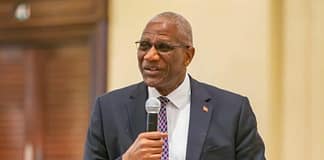Introduction to Interest Rates and Currency Markets
Interest rates and currency markets are intricately linked components of global financial systems. Understanding their relationship is crucial for investors, policymakers, and anyone involved in international trade. Interest rates, set by central banks, reflect the cost of borrowing money and play a pivotal role in shaping economic activity. Meanwhile, currency markets determine the relative value of currencies in terms of one another, influencing trade flows, investment decisions, and economic stability on a global scale. For those seeking deeper insights into these dynamics, firms like Immediate Nova offer valuable educational resources.
The Theory Behind Interest Rates and Exchange Rates
Interest rate differentials are fundamental drivers of currency valuation. According to economic theory, higher interest rates tend to attract foreign capital seeking better returns, thus increasing demand for the currency of the country with higher rates. This demand causes the currency to appreciate relative to others. Conversely, lower interest rates can lead to capital outflows and currency depreciation. Purchasing power parity (PPP) theory suggests that exchange rates adjust over time to equalize the purchasing power of different currencies, factoring in inflation differentials. Interest rate parity (IRP) posits that forward exchange rates should incorporate interest rate differentials to prevent arbitrage opportunities.

Factors Influencing Currency Market Reactions to Interest Rates
Central bank policies are paramount in determining interest rates. The decisions made by these institutions, such as the Federal Reserve in the United States or the European Central Bank in the Eurozone, have profound implications for currency markets. Market expectations also play a crucial role. Forward guidance from central banks—indications about future monetary policy intentions—can strongly influence investor sentiment and currency valuations.
Interest Rates and Currency Volatility
Interest rate changes can significantly impact currency volatility. Sudden shifts in interest rate policies or unexpected announcements by central banks often lead to sharp movements in currency markets. For instance, a surprise interest rate hike may cause a currency to appreciate rapidly as investors anticipate higher returns on investments denominated in that currency. Conversely, a rate cut can lead to depreciation as investors seek higher yields elsewhere.

Historical examples highlight the correlation between interest rates and currency volatility. During periods of economic uncertainty or geopolitical tension, central banks may adjust rates to stabilize their currencies or stimulate economic growth. Such interventions underscore the intricate balance between monetary policy objectives and currency market reactions.
Interest Rates, Carry Trades, and Currency Appreciation
Carry trades capitalize on interest rate differentials between countries. Investors borrow funds in a low-interest-rate currency and invest in a higher-yielding currency, aiming to profit from the interest rate spread. This strategy can lead to currency appreciation in the higher-yielding currency as demand for it increases. However, carry trades are not without risk. Changes in interest rate differentials, economic conditions, or market sentiment can quickly reverse currency movements, exposing investors to potential losses.
Global Economic Conditions and Interest Rate Trends
Global economic conditions exert a significant influence on interest rate decisions. Central banks monitor key indicators such as GDP growth, inflation rates, employment figures, and trade balances to gauge economic health and determine appropriate monetary policies. Economic data releases, such as Non-Farm Payrolls in the United States or GDP reports in major economies, often trigger volatility in currency markets as they provide insights into future interest rate trajectories.
Future Trends: Interest Rates and the Digital Economy
The emergence of digital currencies introduces new dynamics into the relationship between interest rates and currency markets. Central banks are exploring the potential benefits and challenges of digital currencies, which could reshape monetary policy frameworks and payment systems. Moreover, the integration of blockchain technology and decentralized finance (DeFi) into global financial systems may influence interest rate transmission mechanisms and currency market dynamics in ways yet to be fully understood.
Conclusion:
The relationship between interest rates and currency markets is fundamental to understanding global economics and financial markets. Changes in interest rates set by central banks ripple through currency valuations, influencing trade flows, investment decisions, and economic stability worldwide. Monitoring these dynamics is crucial for investors and policymakers alike to navigate the complexities and opportunities presented by the interconnected world of finance.
Advertise with the mоѕt vіѕіtеd nеwѕ ѕіtе іn Antigua!
We offer fully customizable and flexible digital marketing packages.
Contact us at [email protected]













